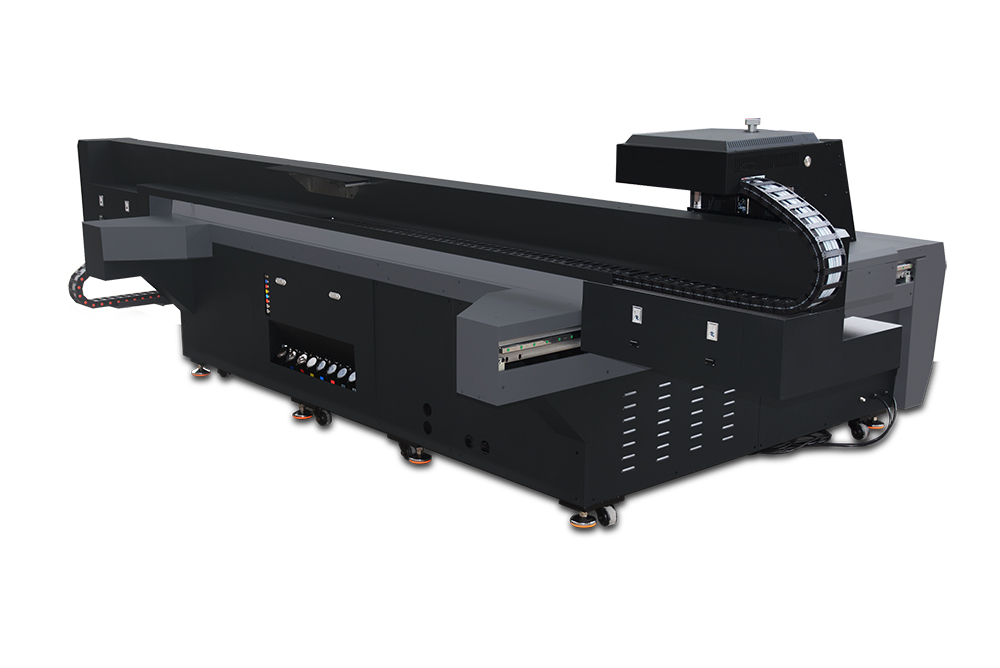UV Flatbed Printer: Frequently Asked Questions
UV Flatbed Printer: Frequently Asked Questions
UV flatbed printers have revolutionized the printing industry, offering unparalleled versatility, precision, and efficiency in producing high-quality prints on various materials. These machines use UV-curable inks that are instantly dried by UV light, allowing for immediate handling and finishing of printed products. As this technology continues to gain popularity, it’s natural for users and potential buyers to have questions about its capabilities, operation, and maintenance. Here are some frequently asked questions about UV flatbed printers, along with comprehensive answers.

1. What is a UV flatbed printer?
A UV flatbed printer is a type of digital printing machine designed to print directly onto flat surfaces or slightly curved substrates. It uses UV-curable inks that are cured (dried) instantly by exposure to ultraviolet light. This technology enables the printer to produce vibrant, durable prints on a wide range of materials, including glass, wood, metal, plastic, and more.
2. What are the advantages of using a UV flatbed printer?
UV flatbed printers offer several advantages over traditional printing methods:
Versatility: They can print on almost any flat or slightly curved surface.
Durability: UV-curable inks are resistant to fading, scratching, and chemicals, making prints last longer.
Instant Curing: Prints are dry and ready for handling immediately after printing, reducing production time.
High Resolution: These printers can produce highly detailed prints with sharp images and vibrant colors.
Environmentally Friendly: UV inks are generally more eco-friendly than solvent-based inks.
3. What materials can be printed on with a UV flatbed printer?
UV flatbed printers are known for their ability to print on a vast array of materials, including but not limited to:
Glass
Wood
Metal (aluminum, stainless steel, etc.)
Plastic (acrylic, PVC, polystyrene)
Ceramic
Leather
Fabrics
Paper and cardboard
Foam board
Stone and tile
4. How does the UV curing process work?
UV curing is a process where UV-curable inks are exposed to ultraviolet light, causing them to dry or cure instantly. When the ink is exposed to UV light, a chemical reaction occurs that transforms the liquid ink into a solid. This process allows for immediate handling and finishing of the printed material without the risk of smudging or bleeding.
5. What is the print resolution of UV flatbed printers?
UV flatbed printers can achieve high print resolutions, typically ranging from 600 dpi (dots per inch) to over 4000 dpi. The higher the dpi, the finer the detail in the print, resulting in sharper images and smoother gradients.
6. Are UV flatbed printers suitable for large-scale production?
Yes, UV flatbed printers are suitable for both small and large-scale production. They offer fast printing speeds and can handle large print volumes efficiently. However, the specific production capacity will depend on the model and specifications of the printer.
7. What is the maintenance routine for a UV flatbed printer?
Maintaining a UV flatbed printer involves regular cleaning of the print head, wiper blades, and print bed to ensure optimal print quality. Additionally, it’s essential to check and replace UV lamps as needed, as they gradually lose intensity over time. Regular software updates and calibration checks are also recommended to keep the printer running smoothly.
8. Can UV flatbed printers print white ink?
Yes, many UV flatbed printers are equipped to print white ink, which is particularly useful for printing on transparent or dark-colored materials. White ink can be used as a base layer to enhance color vibrancy or as a standalone color for creative designs.
9. What safety measures should be considered when operating a UV flatbed printer?
Operating a UV flatbed printer requires adherence to safety protocols:
Wear protective eyewear to shield your eyes from UV light.
Use gloves when handling UV inks to avoid skin contact.
Ensure proper ventilation in the workspace to minimize inhalation of ink fumes.
Follow the manufacturer’s guidelines for safe operation and maintenance.
10. How much does a UV flatbed printer cost?
The cost of a UV flatbed printer can vary widely depending on the printer’s size, specifications, and brand. Entry-level models may start at around $10,000, while industrial-grade machines can cost several hundred thousand dollars. It’s essential to consider your specific printing needs and budget when choosing a UV flatbed printer.
In conclusion, UV flatbed printers offer a versatile and efficient solution for high-quality printing on a wide range of materials. Understanding the basics of this technology, its capabilities, and maintenance requirements can help you make an informed decision when considering investing in one for your business or personal use. With their ability to produce durable, vibrant prints quickly, UV flatbed printers are a valuable addition to any printing or manufacturing operation.
